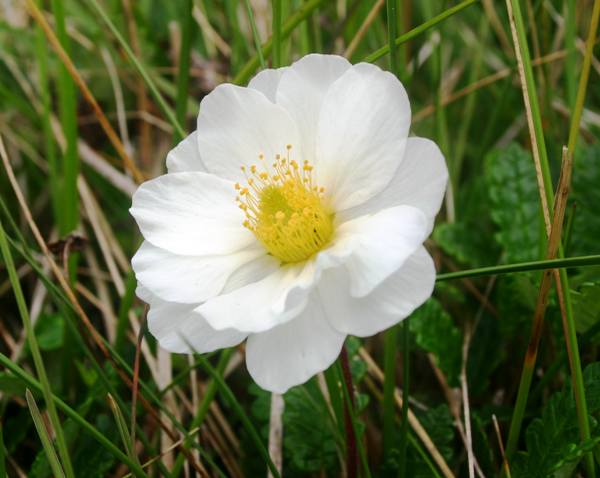Dryas octopetala - Mountain Avens
Phylum: Magnoliophyta - Class: Equisetopsida - Order: Rosales - Family: Rosaceae
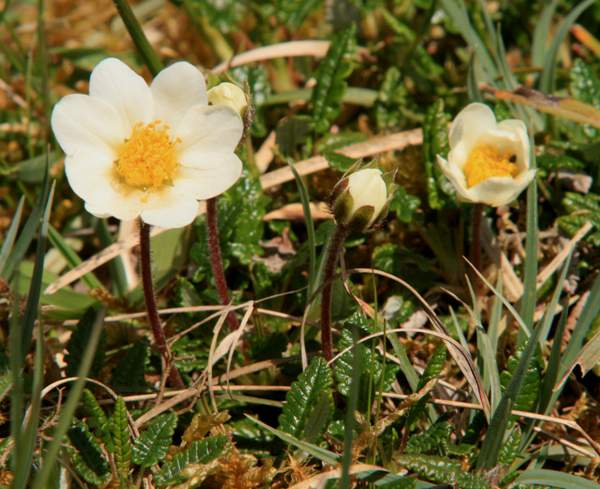
This arctic-alpine plant is a member of the Rose faily, as are other wildflowers bearing the common name 'avens'; however, it is not in the same genus as the various Geums such as Water Avens and Wood Avens. Dryas octopetala often grows on cool open slopes and survives the harshest of winters; not so surprisingly, therefore, it is the national flower of Iceland.
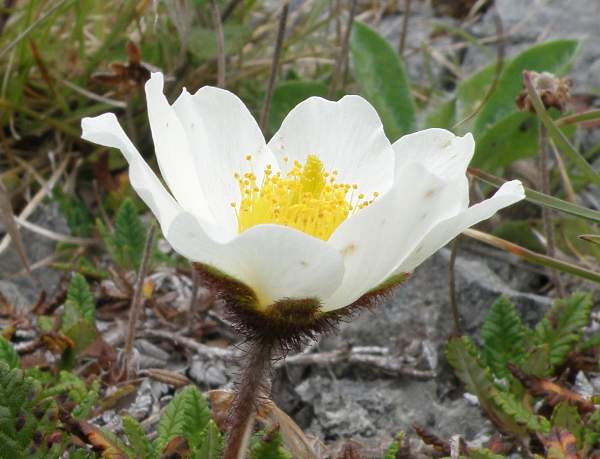
Description
Mountain Avens produces ground-hugging mats rarely more than 10cm tall. The lovely five-petalled (occasionally more than five) flowers produce spiralled siky seed heads than eventually open and are dispersed on the wind. Its solitary dark-green prostrate leaves are slightly lobed; they are smooth on the upper surface but tormentose (covered with fine white hairs) beneath.
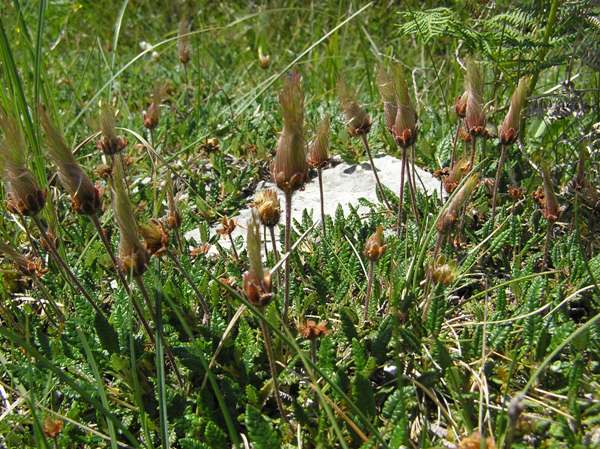
Above: seed heads of Mountain Avens
Distribution
Dryas octopetala is mainly found in mountainous areas from Scandinavia and Iceland down to cetral mainland Europe. In Britain this lovely wildflower occurs sparsely in the Pennines and parts of Snowdonia, and it is more plentiful in the Highlands of Scotland. In south-west Ireland Mountain Avens grows right down to sea level on The Burren, and it is recorded from a few other limestone-rich locations.
In North America this wildflower is found on glaciated parts of Alaska; it also occurs in the Rocky Mountains, from Canada right down to Colorado.
The pictures of Mountain Avens shown on this page were taken in Ireland's famous Burren limstone region during June and early July.
Habitat
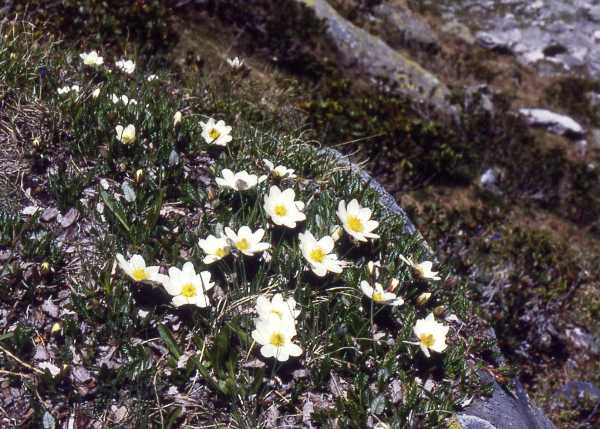
Mountain Avens is a wildflower of fast-draining calcareous regions and is mainly found in shallow soils among limestone outcrops.
Blooming Times
The flowers of Mountain Avens appear in late spring and early summer.
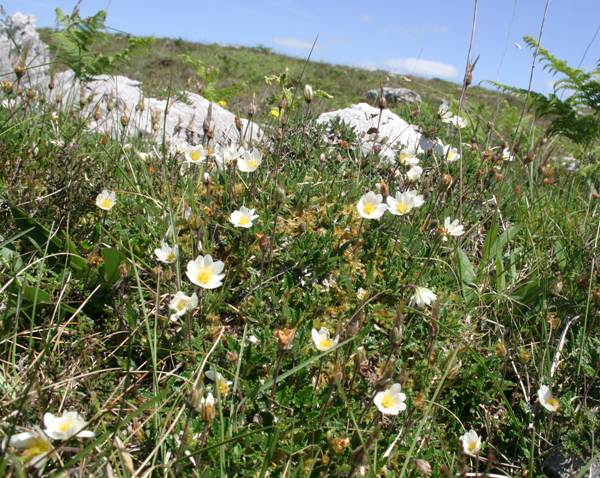
Etymology
Dryas, the genus name, comes from Greek and refers to the fact that the leaves are shaped rather like those of an Oak: dryads, the nymphs of the woods, have long been associated with Oak trees. The specific epithet octopetala comes from Latin: octo- means eight, and -petala means petal. Although the flowers usually have eight petals, it is not unusual to find flowers with 16 petals, eight petals backed by an additional eight and so looking like 'doubles'.
